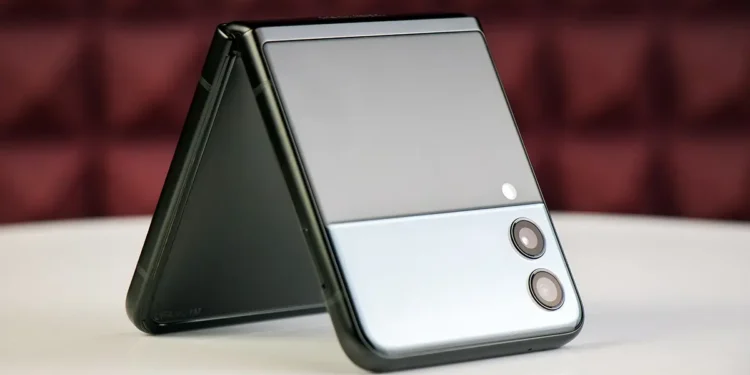From hidden cameras to holograms, the smartphones of the future promise to be out of this world.
It was around a decade ago that the acceptance of our mobile phone as the ubiquitous technology device really began to hit home. From mobile computers to satellite navigation systems, global web connectivity to banking platforms and endless entertainment resources – our phones were the go-to device no matter what our age or demographic.
A staggering 94% of the world’s population now owns a cell phone, with over four billion being smartphones, highlighting their integral role in our lives, yet where does the technology go from here in 2024? We took a look…
Foldable Phones: Evolution of Form and Function
Foldable devices are the next frontier in smartphone innovation, promising to adapt to our needs dynamically, and Samsung Galaxy Z is at the forefront of this trend. However, their success hinges (pun intended) on overcoming durability challenges, such as creating more resilient displays and sealing against environmental factors, a challenge being actively tackled by devices like the Samsung Galaxy Z Fold.
Brands like Samsung are pioneering in making foldables more robust, but the journey towards fully flexible and rollable screens is still underway.
The future will also likely see the extinction of the 3.5mm headphone jack and physical ports, as wireless charging and data transfer technologies advance. By 2034, port-less smartphones could be the norm, mirroring the transition to wireless headphones.
No products found.
Smart Eyewear: The Future of Smartphones
We may see handheld future smartphones evolve into smart eyeglasses. Pioneers like Google Glass have already laid the groundwork and advanced products like Apple’s Vision Pro Headset, though expensive, showcase the potential of this tech, possibly indicating a vision for the 2024 market.
The challenge for widespread adoption lies in creating smart glasses that are not only self-sufficient and functional but also stylish for daily use. Miniaturising technology to fit within elegant, lightweight frames is key, ensuring performance isn’t compromised and sufficient battery life is maintained.
Futuristic Holographic Displays
By 2034, imagine future smartphones transforming the way we view content with cutting-edge holographic displays, projecting vivid 3D images into the air, much like scenes from science fiction movies, creating a futuristic experience.
This advanced technology will eliminate the need for cumbersome 3D glasses, offering users a stunning, unencumbered viewing experience. These holograms will be viewable from multiple angles, providing a fully immersive and interactive visual experience that transcends traditional two-dimensional screens, radically changing our interaction with digital media.
Artificial Intelligence (AI)
AI will see an unprecedented expansion in its capabilities, transforming smartphones into pivotal hubs within a network of smart devices, possibly leading to innovations that could replace smartphones as we know them. These advanced gadgets, driven by sophisticated AI algorithms, will take over a myriad of daily tasks, potentially transforming the landscape of the smartphone market.
They’ll not only manage schedules and make reservations with ease but also venture into more personal realms like storytelling, offering customised narratives and experiences, possibly leveraging generative AI. This seamless integration will extend far beyond mere convenience, deeply embedding into our daily routines and interactions.

The Quest for A Seamless Smartphone Display
Front-facing cameras continue to occupy screen space, but advancements like Samsung’s Under Display Camera (UDC) are bringing us closer to an unblemished display. This technology aims to conceal the camera for an uninterrupted viewing experience.
Education and Environmental Stewardship
The educational potential of smartphones is immense, mobile ownership amongst teenagers is the norm, and devices like the Samsung Galaxy contribute significantly to this trend. This offers the chance to revolutionise learning methods.
In addition, the industry is moving towards sustainability. The emergence of eco-friendly smartphones and the growing popularity of refurbished phones indicate a shift towards environmental consciousness in technology.
Read This Magazine participates in the Amazon Services LLC Associates Program, an affiliate advertising program designed to provide a means for sites to earn advertising fees by advertising and linking to Amazon.com.










